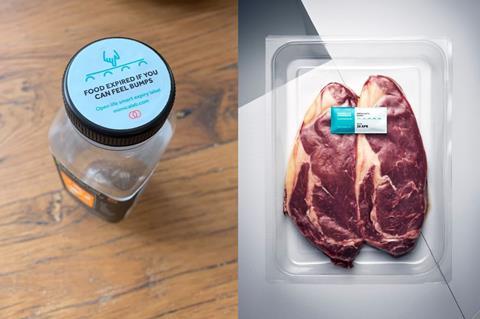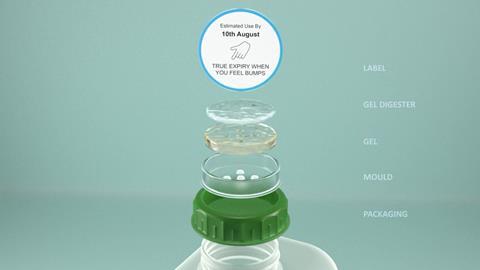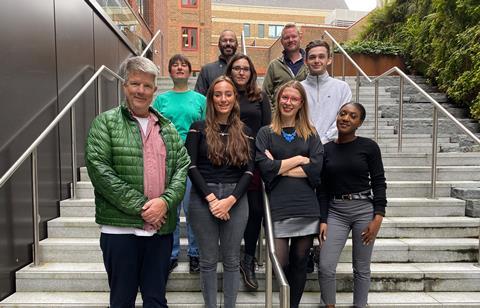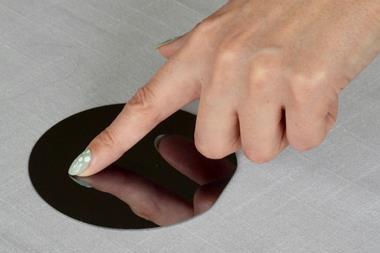Mimica’s tactile food labels know better than best-before dates
We throw away an awful lot of food. In 2018, UK households alone wasted 6.6 million tonnes according to the Waste and Resources Action Programme (Wrap). Over two thirds (4.5 million tonnes) of that discarded food could still have been eaten, an unnecessary waste worth £14 billion altogether or £700 for an average family with children, Wrap says.

There are many reasons why food is thrown out, including health reasons, bulk buying of perishables, and the odd cooking disaster that renders a meal fit only for the bin. Many of us also throw items away because they have passed the date on the packaging. Often, this is unnecessary: if stored correctly, food can be eaten days (bread), weeks (apples and crisps), months (biscuits and cereals), or even years (dried pasta and canned food) after the best-before date.
We might use our common sense to tell when food has gone off (does it smell bad? Does it look the wrong colour?) but temperature-responsive labels, such as those developed by London-based start-up Mimica, can remove the guesswork.
Mimica’s freshness indicator is applied as a label on food packaging or as a cap on bottles. Inside the label is a bioresponsive gel that reacts at the same rate a particular food spoils, explains Giorgia Raci, the company’s R&D leader. ‘The design is simple: we cover a bumpy surface with a gel, then add an activator that reacts with the gel and breaks down its structure, gradually turning it from solid to liquid

‘You touch the label and when it’s smooth (solid), the food is good to eat. When you feel the bumps, it should no longer be consumed.’ The left side of the label is always smooth so that it is clear to consumers when the right side is bumpy.
The gel is a hydrocolloid polymer based on polysaccharides. It can be calibrated by tweaking the ingredients to match the decay rate of any particular food. It also reacts to temperature, breaking down faster when food is kept at room temperature than when it’s kept in the fridge.
In this way, Mimica accounts for the conditions the food is stored in. One of the reasons why expiry dates are overly cautious is that they are based on the worst-case storage scenario for the product, even though most of us will store food in much better conditions.
Touch and go
Mimica’s is not the first temperature-sensitive label on the market. UK retailer Sainsbury’s, for instance, launched a ‘smart’ label in 2017 that changes colour from yellow to purple once a pack of ham has been opened, depending on time and temperature. But Mimica stands out from the crowd by being tactile.
The idea for the tactile bump was born when Mimica founder, Solveiga Pakštaitė, was trying to stem rising levels of obesity and diabetes among the blind and visually impaired for an educational design project. The project raised Pakštaitė’s interest in how the visually impaired know when their food goes off. In devising a means to communicate the probability of a food’s expiry by touch alone, Pakštaitė stumbled upon market demand for a product that helps everybody reduce food waste.

Inclusivity is at the core of Mimica’s philosophy. Raci says one of the biggest challenges for the company has been in replacing the gelatine used in the label prototype with a plant-based alternative, to make the label fully vegan. ‘Gelatine is a great material, it’s easy to use, versatile, cheap, and used in many different industries. It wasn’t easy to find the right alternative,’ she says. ‘But some people weren’t happy to use something that contains gelatine and we want to be inclusive. Now we have a fully vegan, plant-based polysaccharide formulation.’
Each label can only be used once but is fully recyclable. At a price of one penny per label, it’s affordable for consumers and promises a clear return on investment for food companies wanting to reduce waste in their supply chains, Rici says. In the future the company sees it being applied beyond food, too: users of medicines and cosmetics, for instance, can benefit from an inclusive, reliable way of telling when products have expired.
Mimica has trialled the label with some food companies, including dairy producer Arla, and will be launching it with European retailers in a few months’ time. A mix of funding from private investors and a series of grants has allowed the nine-strong team to set up its first manufacturing run to the point where it expects to launch Mimica Touch bottle caps on juices in Europe by the end of the year. The company’s hard work was validated when it was one of the winners in the food and drink category of the Royal Society of Chemistry’s 2019 Emerging Technologies competition.
Mimica
Date of founding: April 2017
Location: London, UK
Origin: Concept created at Brunel University, London
Employees: Nine full-time
Total funding to date: £1.55 million in a mix of grants and private investment












No comments yet